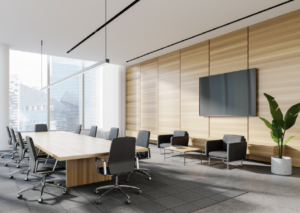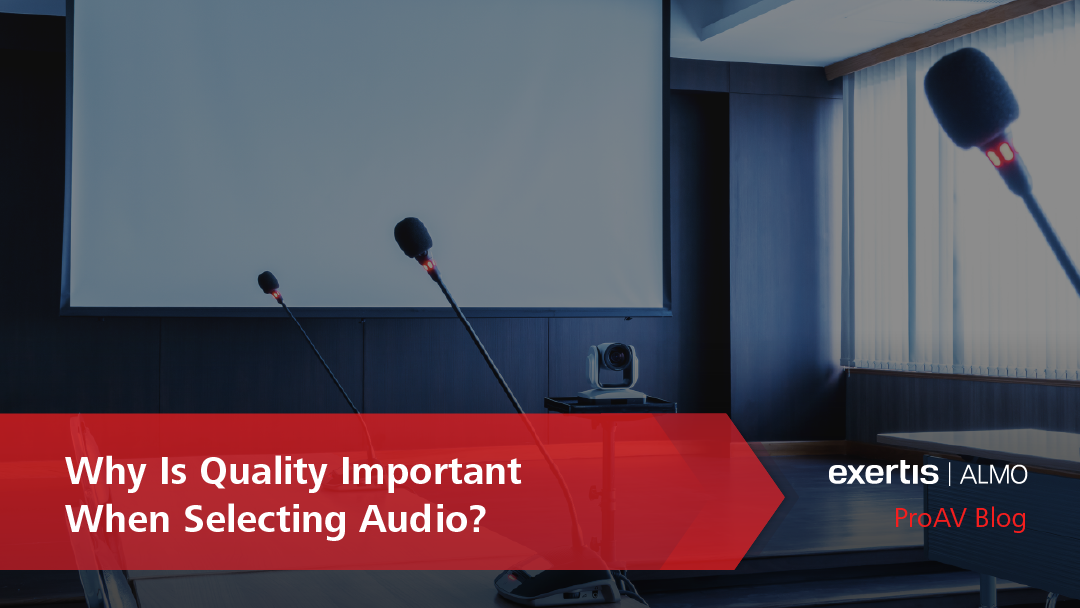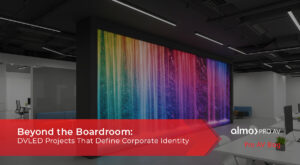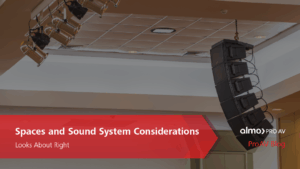I was pondering this topic recently when I met a friend for lunch at one of my favorite eatery places. They recently moved to a new location and ever since moving, it’s been difficult to really enjoy eating at the place. My friend and I were discussing how incredibly loud the place gets, to the point that it’s difficult to really have a conversation with each other. As a result, I often just pick up the food and bring it home. This situation really made me wonder what was missing in the audio design when they moved to this new location. I decided to do some research by talking to our Exertis Almo Audio Experts to gain some insight and, hopefully, help you avoid this common mistake.
When choosing the audio technology for a project, every installation is a reflection of your brand and reputation. Customers expect their audio systems to perform without trouble, and it’s essential to select quality solutions that deliver exceptional functionality and reliability. Fortunately, there are many high-quality audio options with cost-conscious price tags, so you won’t have to compromise on excellence.
Additionally, quality is often reflected in the ease of installation. Specifically in meeting rooms, huddle spaces, and classrooms, audio technology should be simple to use and strive to avoid any frustration for the end-user. This simplicity can help ensure that the technology is used effectively, avoiding the common pitfall of equipment going unused due to user confusion.
Here are a few key considerations when selecting quality audio technology.
Assess your environment.
 Before installing audio equipment, it’s important to evaluate the space itself, as there are many factors that affect audio quality. It’s essential to consider the acoustics of an environment, as a particular space might require a few changes to adjust the echo and create a more comfortable listening experience once the audio equipment is installed.
Before installing audio equipment, it’s important to evaluate the space itself, as there are many factors that affect audio quality. It’s essential to consider the acoustics of an environment, as a particular space might require a few changes to adjust the echo and create a more comfortable listening experience once the audio equipment is installed.
In fact, it’s common to run into acoustical issues in multi-use spaces, as they’re designed with several functions in mind. For example, a school might utilize a single space for their gym and auditorium, which can cause acoustical design to be overlooked. In essence, you’ll want to assess an environment before investing in any audio technology, as acoustical treatment is an essential step in providing a high-quality audio experience.
Consider service and warranty.
Along with functionality and reliability, quality often correlates with the level and service and warranty provided by manufacturers. Although you aim to avoid any issues with a particular product, you should ensure that support is readily available if problems arise with a manufacturer’s technology. This aspect of product selection is frequently overlooked, but having a product warranty and readily available support can help save time and protect your reputation with your customers.
 See the products in action.
See the products in action.
When you get to experience the way in which products function across various environments, you can understand the practical applications of those solutions. There are a variety of educational resources available to strengthen your understanding of a product, and you can later apply that knowledge in the field to truly understand how the technology functions in a particular space.
Don’t overlook the audio.
If you’re looking to achieve high-quality audio in a space, it’s essential to ensure that the audio is not overlooked in the planning and design process. Oftentimes, the visual aspects receive far more attention, like displays and protection technology. In order to design a well-rounded, comfortable space for users, the audio and visual components must both be at the top of the list.
The bottom line is that quality audio is paramount for successful, comfortable communication.
For me, the main takeaway was simply that it’s crucial to assess the environment, because, in my scenario, the restaurant would have identified ways to absorb the noise. Would that have fixed it completely? It would make it more comfortable for their patrons to chat, and they’d potentially spend more time and money. It might’ve cost a few more dollars, which would have paid off in the long run.
You always have available resources to assist with all of your audio and video needs at Exertis Almo. Please feel free to contact me or your Exertis Almo team.

Angie Greene | DSCE
Business Development Manager
Supported Manufacturers: Panasonic Connect









